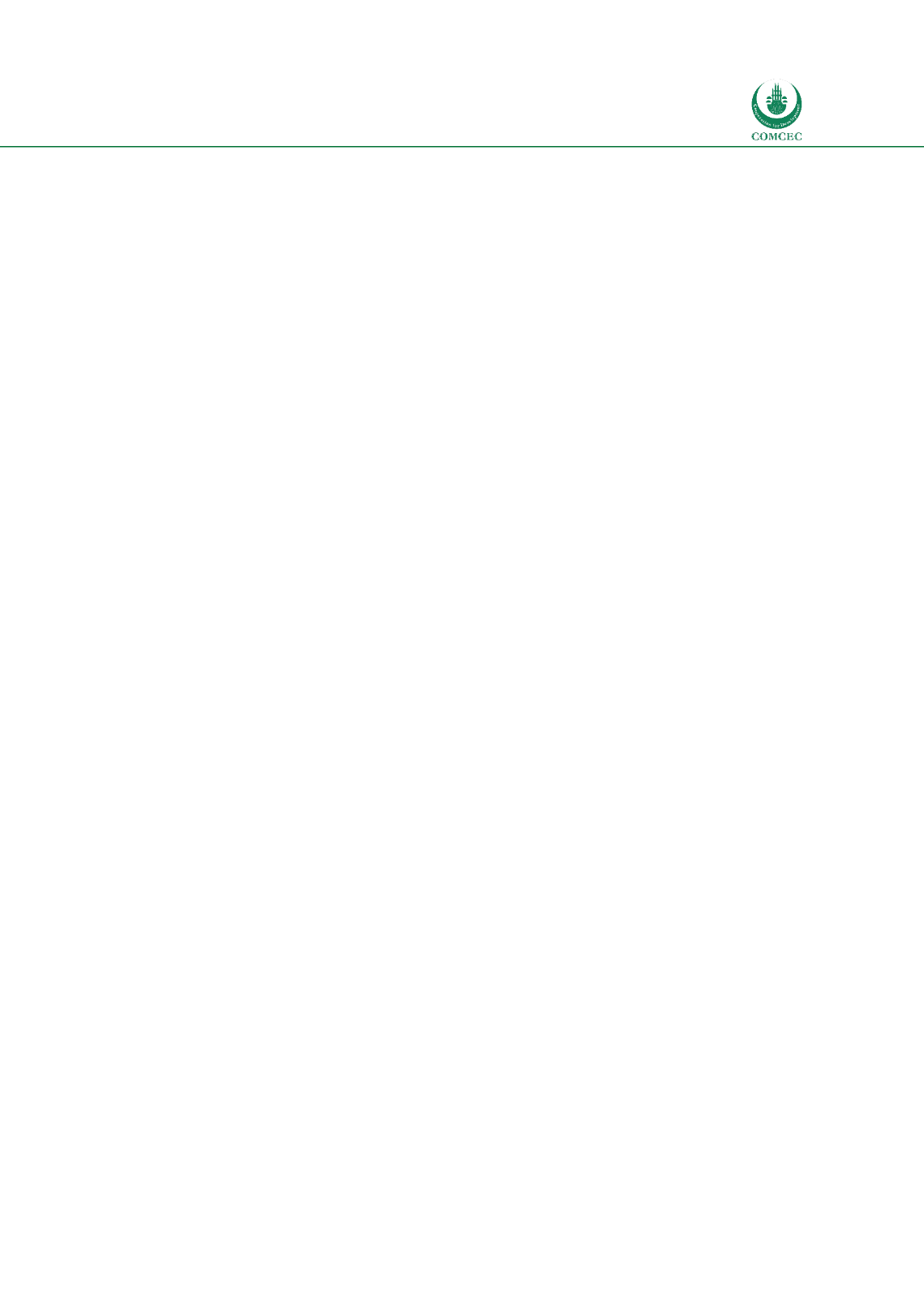

National and Global Islamic Financial Architecture:
Prolems and Possible Solutions for the OIC Member Countries
125
4.8.3. Shariah Related Issues and Governance Framework
Within the context of the official company structure in Saudi Arabia, the Shariah Supervisory
Body (SSB) is not recognised by either Saudi Arabian Monetary Agency (SAMA) or the Capital
Market Authority (CMA). Among the laws, only the Finance Companies Control Law stipulates
that companies engaging in finance activities should observe the principles of Shariah that are
agreed upon by the selected Shariah Committee by the company. However, there are no
specific rules or regulations pertaining to SSB. Issues related to SSBs are left to individual IFIs
and their roles and responsibilities are subject to the decisions of the management.
4.8.4. Liquidity Infrastructure
According to Banking Control Law 1966 all banks are required to observe
the statutory
requirements to conduct banking business.
No official special treatment is applied to Islamic
banks under the Banking Control Law 1966. According to the Regulatory Consistency
Assessment Programme (RCAP) and Assessment of Basel III Liquidity Coverage Ratio
regulations for Saudi Arabia, SAMA regulates Shariah compliant banks in the same way as
other conventional banks in the KSA. Therefore, in present the running system does not lead to
any deviation from Basel standards (BCBS 2015). However, SAMA has implemented a
murabaha
facility for Sharia-compliant banks that is treated as a central bank reserve and can
be included as High-quality Liquid Assets (HQLA) (BCBS 2015: 13). The facility can be
classified as a
de facto
cash placement with the central bank, and it also replicates a treasury
bill. Islamic banks are allowed to make withdrawals, if needed, from SAMA against the
Murabaha
facility. Furthermore, banks are allowed to use this product as collateral for central
bank operations and can therefore generate liquidity when needed. The report considers the
treatment of this product by SAMA in the LCR to be adequate.
4.8.5. Information Infrastructure and Transparency
Accounting and Auditing Framework/Transparency and Disclosure
Banks are considered a company and should comply with the Company Law under the Ministry
of Commerce as well as the accounting standards issued by the Saudi Organization of Certified
Public Accounting (SOCPA). However, SAMA issued a manual to cover financial accounting
standards for commercial banks (SAMA 2009). These standards consist of eight standards to
be applied by banks in Saudi Arabia. SAMA points out that that Accounting Standards issued by
the Ministry of Commerce can be used for any accounting issues not covered in the Accounting
manual of SAMA. The accounting standards of Accounting and Auditing Orgnisation for Islamic
Financial Institutions (AAOIFI) can be used as long as these do not contradict the existing
standards or guidelines.
SAMA also issued Corporate Governance Regulation for banks that include a principle on
Disclosure and Transparency. The principle stipulates that banks should publish all financial
and non-financial information concerning different stakeholders to regulators and concerned
parties (SAMA 2014). Similarly, SAMA issued Insurance Corporate Governance Regulations in
2015 that has a section on Disclosure and Transparency (SAMA 2015b: 12) and Articles 29 and
34 of Implementing Regulation of the Finance Companies Control Law includes transparency
of information by these entities (SAMA 2015c). Further, Part 3 of the Corporate Governance
Regulations issued by Capital Market Authority deals with Disclosure and Transparency (CMA
















